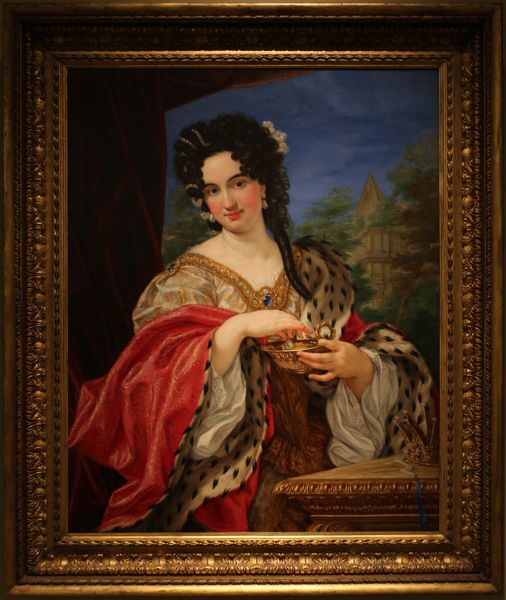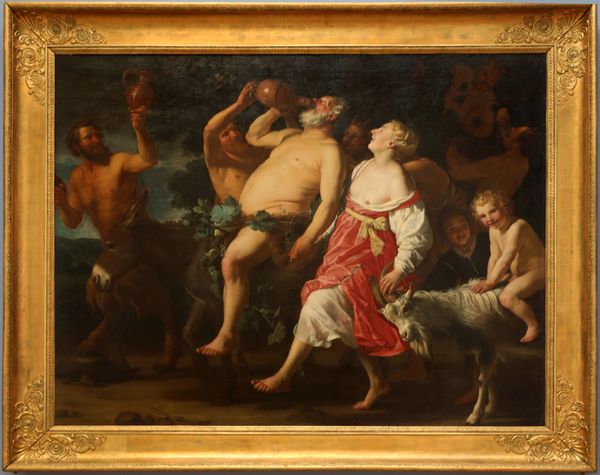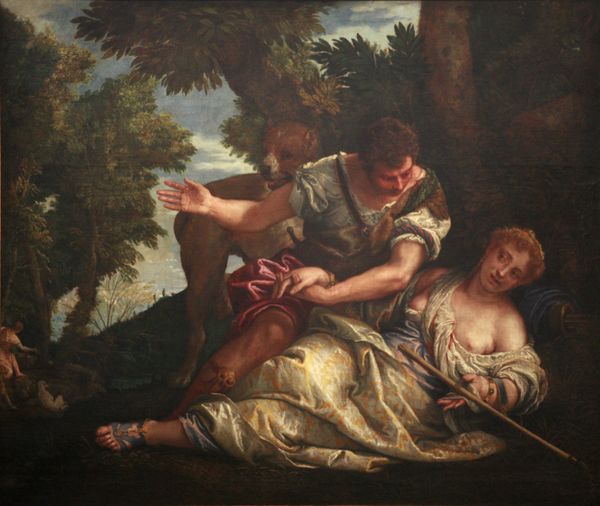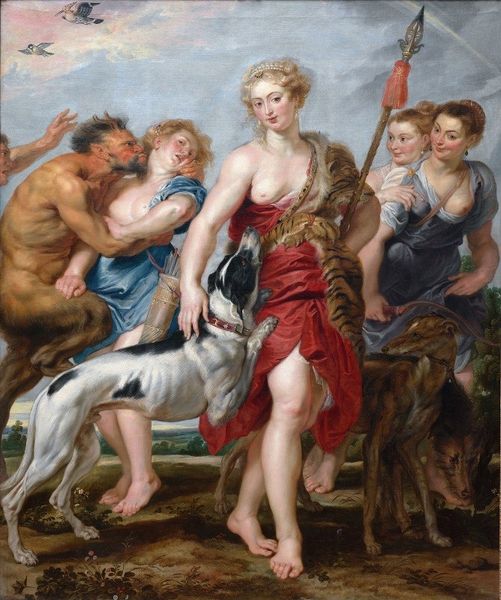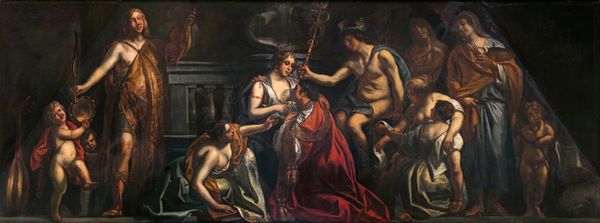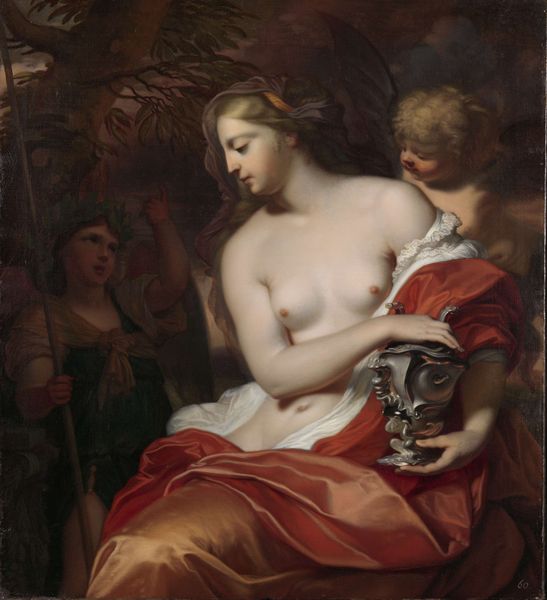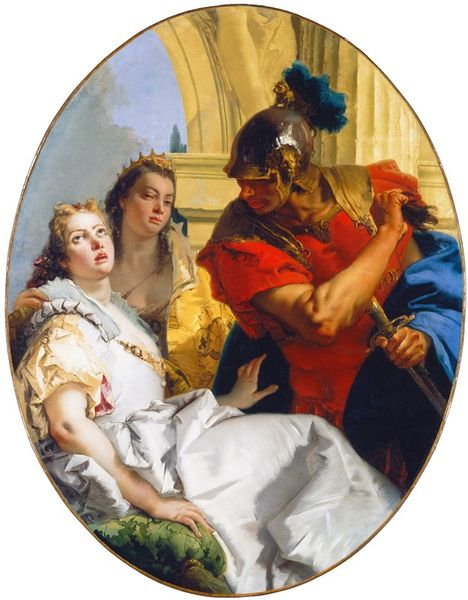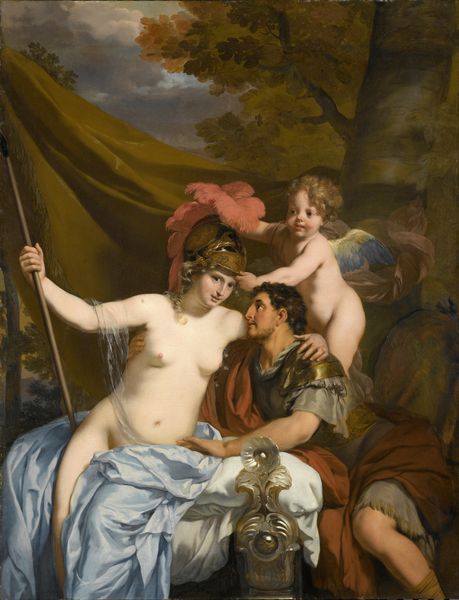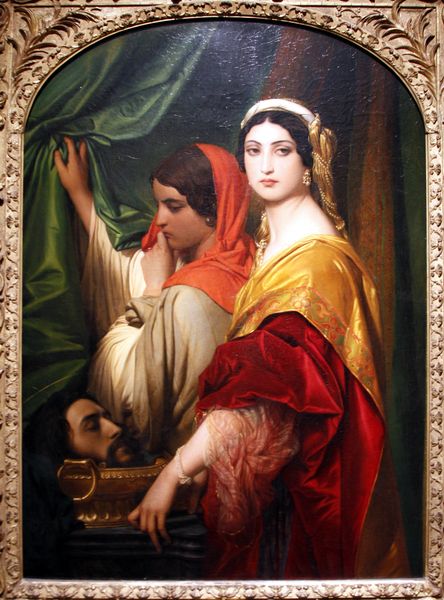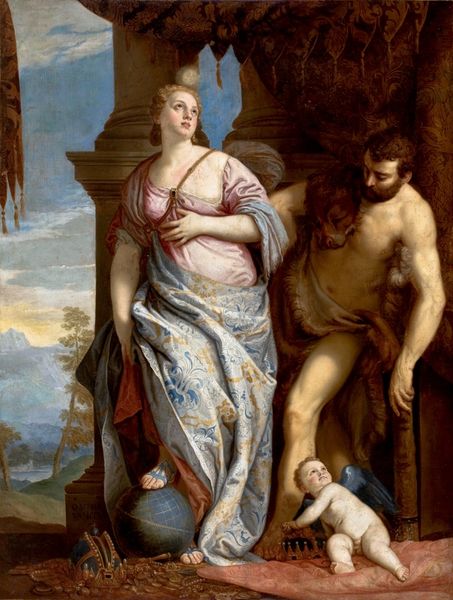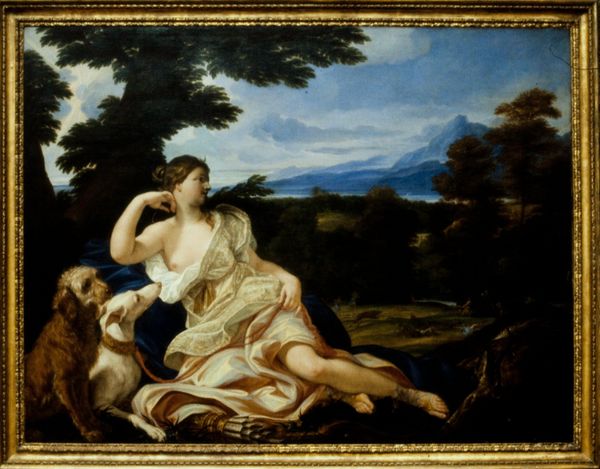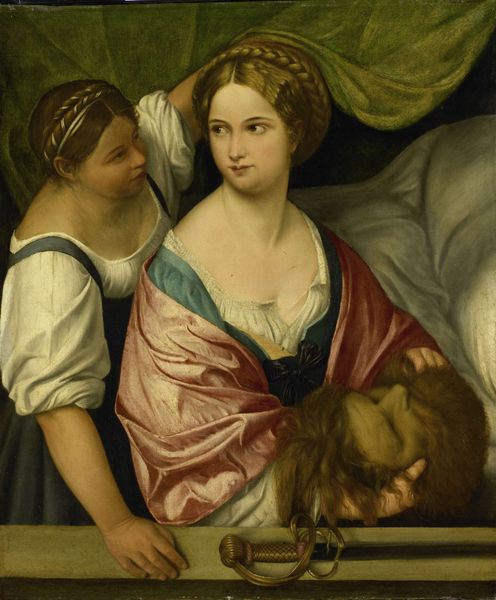
painting, oil-paint
#
portrait
#
allegory
#
painting
#
oil-paint
#
mannerism
#
oil painting
#
history-painting
#
nude
Copyright: Public domain
Curator: Bartolomeo Passerotti created this intriguing painting, “Double Dressed Portrait of Circe and Ulysses,” around 1575. It’s rendered in oil paint, showcasing his mastery of Mannerist style. Editor: Immediately I'm struck by the dual nature of the painting. Half idealized beauty, half… something else entirely. Those looming, almost monstrous figures in the background send chills down my spine, which really contrast with the regal character on the fore. Curator: Indeed, Passerotti utilizes that contrast to great effect. The meticulous depiction of drapery, jewelry, and even the metalwork invites close examination, but he clearly is inviting a close reading of its construction, the context of materials at play and allegorical references. Editor: And speaking of materials, there’s almost a coldness in how those urns are rendered, like polished steel rather than clay or bronze, so tactile and metallic, which clashes beautifully with the softness of skin that, again, that half nude presentation creates.. It enhances that unsettling mood for me. What's it to you? Curator: We see him subtly addressing the social role of art through portraiture by playing up symbols of alchemy, particularly with the urns containing mythical potions that can shift reality itself! Notice how the use of precious pigments and the labor involved in preparing the canvas, grinding the pigments, even building the frames become integral to the symbolic intent to elevate craft to high art.. Editor: So the high sheen you can only get from quality craftsmanship creates the otherworldly atmosphere of transformation... The half-beasts echo that too. In an abstract sense, I see him wrestling with his perception on truth and the power of the paintbrush as its vehicle. I'm left feeling like the painting poses a complex challenge to simple assumptions! Curator: Absolutely, this oil painting, far from being just an historical exercise or surface of display, invites reflection on cultural meaning, material value and what the true means for transformation is in context. Editor: I can’t help feeling a lingering fascination with how he plays the ugly to reflect some higher concept through contrast. Almost like those "ugly" ceramic forms are mirrors! What a master he was at using those materials to speak truth.
Comments
No comments
Be the first to comment and join the conversation on the ultimate creative platform.
